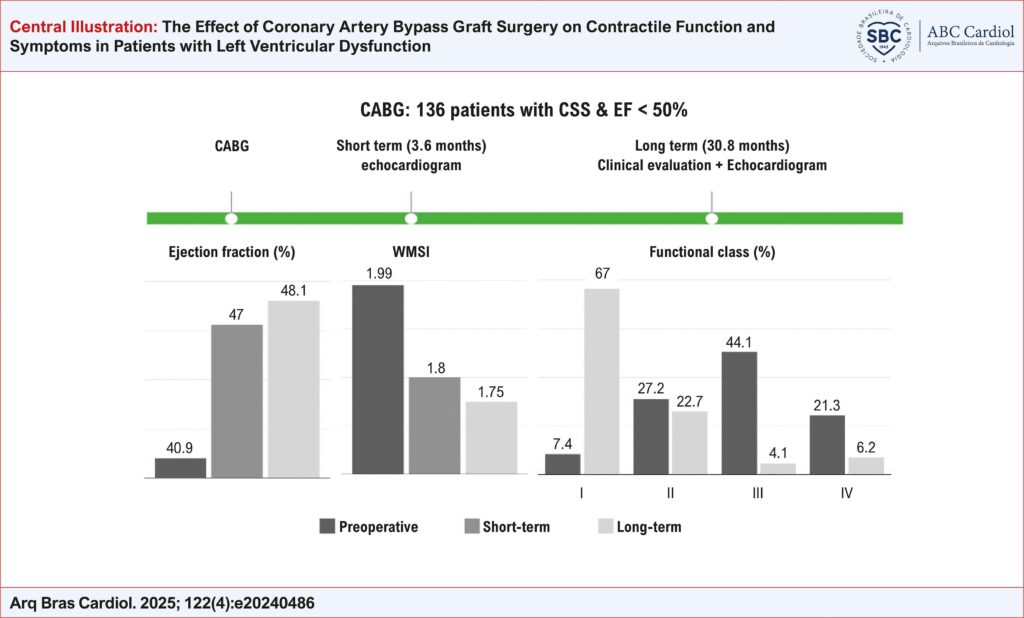Arq. Bras. Cardiol. 2025; 122(4): e20240486
The Effect of Coronary Artery Bypass Graft Surgery on Contractile Function and Symptoms in Patients with Left Ventricular Dysfunction
Abstract
Background
The degree of left ventricular (LV) dysfunction is an independent risk factor for poor outcomes in patients with chronic coronary syndrome. Coronary artery bypass graft (CABG) is the standard care for the management of ischemic heart failure to improve symptoms and prognosis. However, the predictors of improvement are still uncertain.
Objective
To assess the effect of myocardial revascularization on LV function and symptoms in patients with CCS and reduced left ventricular ejection fraction (LVEF), as well as to identify the improvement predictors.
Methods
We retrospectively analyzed the data and clinical status of 136 consecutive patients with LVEF<50% that underwent CABG. During clinical follow-up echocardiographic LV function was reassessed at the short-term (3.6 months) and long-term (30.8 months), and compared to baseline.
Results
Mean pre-operative LVEF was 40.9 ± 8.6% and wall motion score index (WMSI) was 1.99 ± 0.36, both improving at long-term to 48.1 ± 15.0% (p<0.001) and 1.75 ± 0.49 (p<0.001), respectively. We observed that 55.7% of the patients presented an improvement of LVEF≥10% and 58.1% in WMSI ≥10%. Univariate logistic regression analysis revealed that cerebrovascular disease was the only variable to be predictor of LVEF improvement. At the end of follow-up, we observed a reduction in the rate of patients in functional class III/IV when compared to baseline (65.4 vs. 10.3% - p<0.001).
Conclusions
Patients with CCS and reduced LVEF undergoing CABG experienced improvement in both LV contractile function and size, with beneficial response in functional class.
271

